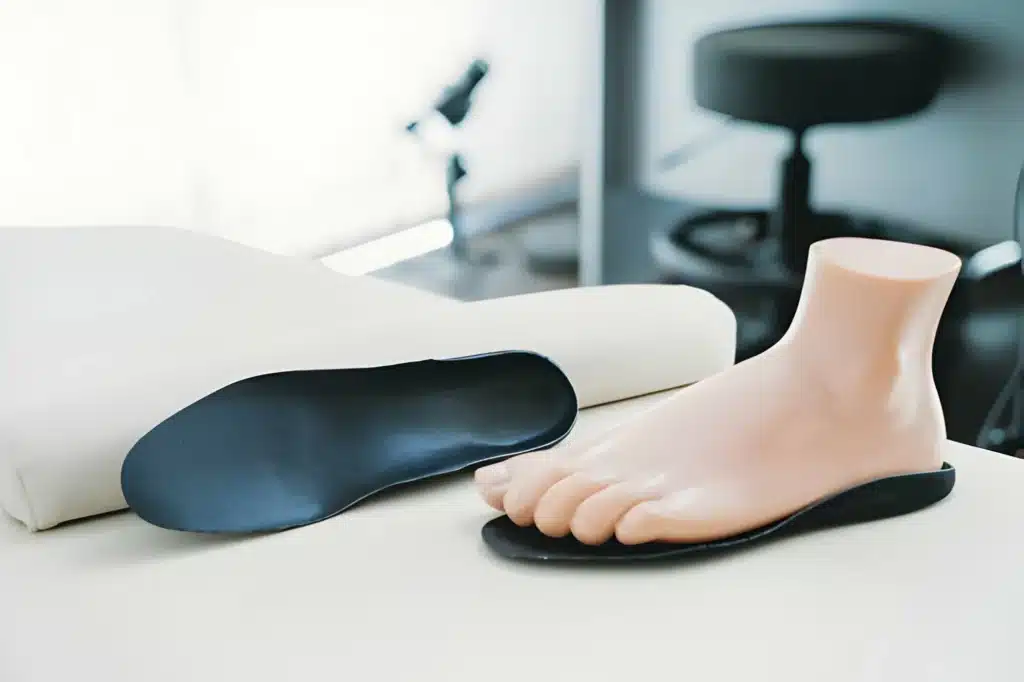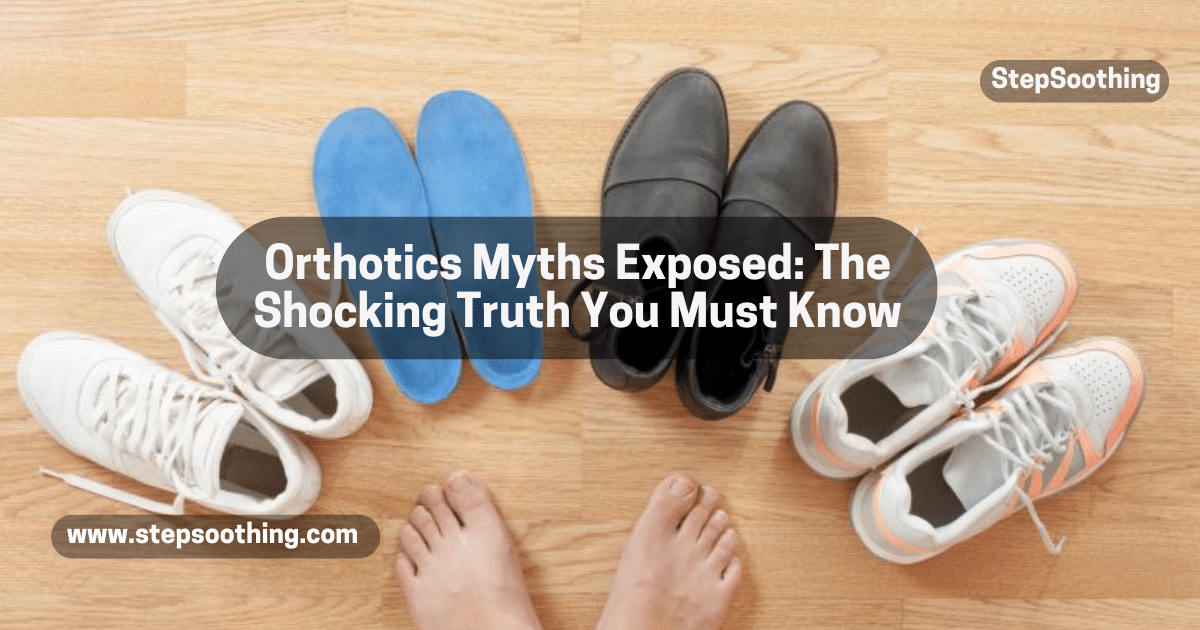Many people hold common misconceptions about orthotics, believing they are only for the elderly or individuals with disabilities. In reality, they are essential for foot health, postural alignment, and mobility. Whether you’re an athlete, recovering from an injury, or managing a chronic condition, the right devices provide crucial support. Thanks to advancements in technology and materials, modern orthotics are more comfortable, ultra-lightweight, and adaptable to different environments. However, outdated beliefs still prevent many from experiencing their full benefits.
Common Misconceptions About Orthotics

Misconception #1: Orthotics Are Only for the Elderly
A common myth is that orthotics are only necessary for the elderly. While they do help with age-related mobility challenges, people of all ages can benefit. Children, athletes, and individuals with temporary injuries or permanent disabilities rely on orthotics for better support and muscle control.
For example, young athletes use orthotics to enhance sports performance, reduce the risk of injury, and improve biomechanics. Children with congenital disabilities or misalignment issues need custom-made orthotics to help their lower limbs develop properly. Regardless of age, these devices ensure proper balance, flexion, and functionality.
Misconception #2: Orthotics Are Just Expensive Shoe Inserts
Many believe that orthotics are just overpriced versions of off-the-shelf insoles found in expensive shoes. However, there is a major difference between custom prescription orthotics and generic products. While cheap shoes may contain basic cushioning, they lack the ability to reproduce the natural curves of the foot or provide real corrections.
Custom-fitted orthotics are based on a biomechanical examination, considering factors like foot profile, weight load, and postural health. They stabilize lower limbs, prevent chronic conditions, and provide proper support for walking and running. Unlike generic products, they are made from high-quality materials, such as carbon fibre and adaptive technologies, ensuring durability and comfort.
Misconception #3: Orthotics Weaken the Foot Muscles
A common concern is that orthotics cause muscles to become weaker by providing too much support. In reality, they prevent muscle atrophy by guiding the body into proper alignment. Instead of replacing muscle control, they assist in correcting biomechanical issues, reducing strain, and improving responsiveness.
For example, individuals with Achilles tendonitis or chronic pathologies require modifications to avoid overused or overstretched muscles. Proper corrections in foot contours help distribute weight load evenly, minimizing unnecessary stress on the ankle, knees, and hips. Over time, this improves strength, symmetry, and overall functionality.
Misconception #4: Only People with Foot Pain Need Orthotics
Many assume that orthotics are only for those with foot pain, but they also prevent complications and improve postural health. Misalignment in the lower limbs can lead to issues in the shins, lower back, and hips. Even people who are currently asymptomatic can develop problems if their gait is not properly supported.
Athletes often use orthotics to enhance sports performance and reduce the impact of high-intensity activities. Those recovering from a broken leg or temporary injuries may need specialized shoes to maintain proper muscle tone and prevent further strain. By addressing biomechanical imbalances early, orthotics help prevent chronic conditions from developing.
Misconception #5: Orthotics Are Uncomfortable and Hard to Adjust To
Some people think orthotics are uncomfortable, but this is usually due to a lack of proper adjustments. Like any supportive footwear, they require an adjustment period as the body adapts to better alignment. Over time, they become comfortable, reducing discomfort and improving mobility.
Modern technical orthotics are designed to be thin, maneuverable, and work with a variety of good shoes. Whether you need casual shoes, specialized shoes, or options for a black-tie wedding, manufacturers now offer styles that blend functionality with comfort.
Misconception #6: Custom Orthotics Are Too Expensive and Not Worth It
Another common misconception is that custom-made orthotics are too expensive. While they may cost more than off-the-shelf options, they provide long-term benefits that justify the price. Poorly fitted generic products can cause more harm than good, leading to the need for costly medical interventions later.
Some insurance plans, including those in Canada, cover custom prescription orthotics, making them more accessible. Brands recommended by International Orthotic Labs also manufacture options tailored to different activity levels, ensuring the right fit for every patient. Investing in quality materials helps prevent chronic conditions and improves mobility in the long run.
Misconception #7: Orthotics Are a One-Size-Fits-All Solution
Many people believe that all orthotics are the same, but they must be tailored to individual needs. Different types address specific conditions like flat feet, plantar fasciitis, or postural health concerns. A professional evaluation ensures the correct adjustments for unique foot structures.
For example, AFOs come in multiple models, each designed for specific biomechanical needs. Some focus on muscle control, while others prioritize flexibility or stability. Choosing the one best brace depends on a person’s goals, lifestyle, and previously loved activities.
Misconception #8: Orthotics Are Difficult to Fit Into Shoes
Many people worry that orthotics require a larger shoe size or only work with specialized shoes. However, modern adaptive technologies have made it possible to design thin, ultra-lightweight orthotics that fit seamlessly into a quality shoe.
Manufacturers create modified insoles to match a person’s footprint, ensuring proper support without affecting comfort. Whether for a triathlon, a high-intensity workout, or everyday walking, the right adjustments help accommodate orthotics without limiting functionality.
Misconception #9: Online Orthotics Are Just as Good as Prescribed Ones
Some people buy generic products from Amazon, assuming they are as effective as custom-fitted orthotics. However, without a biomechanical examination, these mass-produced inserts fail to provide the necessary corrections for unique needs.
A visit to an orthotist or specialist ensures the correct measure of foot profile, weight load, and flexibility for optimal support. Poorly fitted orthotics can cause more discomfort and increase the risk of injury. Investing in prescribed orthotics ensures better functionality, improving both mobility and overall physical health.
Related Articles
Do Insoles help with Plantar Fasciitis
Effectiveness of different Insole Materials
Research on Orthotics and Knee Pain Relief
How to Fit Insoles in Tight Shoes
People Also Asked about Common misconceptions about Orthotics
What are the negatives of orthotics?
While orthotics provide significant benefits, some people may experience discomfort during the adjustment period. Poorly fitted or off-the-shelf inserts can cause misalignment, increasing the risk of muscle atrophy or unnecessary strain on the lower limbs. Additionally, wearing orthotics in cheap shoes with poor support may reduce their effectiveness. To avoid these issues, it’s important to get custom-fitted orthotics based on a biomechanical examination. Ensuring a proper fit and gradually increasing wear duration helps the body adapt without complications.
What are the complications of orthotics?
If not properly fitted, orthotics can lead to pressure points, skin irritation, or overcorrection of foot alignment, affecting the knees, hips, or lower back. Some individuals may experience muscle imbalances if their orthotics do not properly match their foot profile and activity level. Regular check-ups with an orthotist or podiatry professional ensure that necessary adjustments are made. If discomfort persists, modifications to the materials, contours, or flexibility of the orthotics may be required.
When should you not wear orthotics?
You should avoid wearing orthotics if they cause persistent pain, worsen foot pain, or create balance issues. People with acute injuries, such as an immobilized broken leg, should consult a specialist before using orthotics, as they may require a temporary medical brace instead. Additionally, wearing orthotics during activities that require maximum foot flexibility, such as certain high-intensity sports, may not always be ideal. In such cases, a specialized sports performance insole might be recommended instead.
What is the difference between orthopedic and orthotic?
The term orthopedic refers to the branch of medicine that deals with the musculoskeletal system, including bones, joints, and muscles. Orthotic, on the other hand, refers specifically to devices designed to support, correct, or realign the foot, ankle, or lower limbs. For example, orthopedic doctors treat medical conditions related to bone structure, while orthotics are used as a corrective tool to improve postural health and prevent further complications.
How long does it take to adjust to orthotics?
The adjustment period varies by individual but typically takes 2 to 4 weeks. Initially, orthotics may feel uncomfortable, especially in previously loved activities like running or walking. The body needs time to adapt to the new foot profile and alignment. Gradually increasing wear time, wearing supportive footwear, and ensuring proper modifications if needed will help ease the transition. If discomfort persists, a professional evaluation can determine if further adjustments are necessary.



